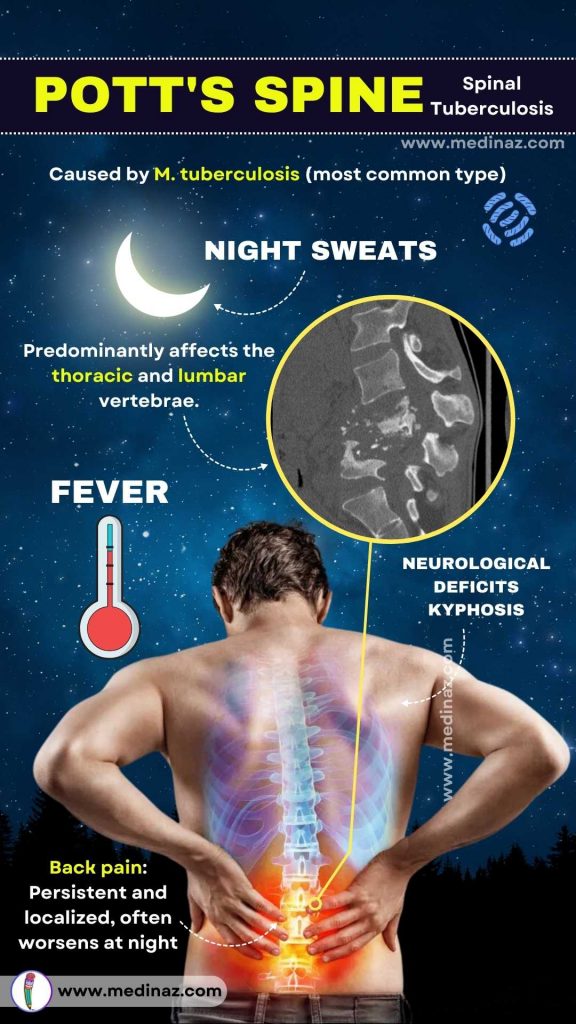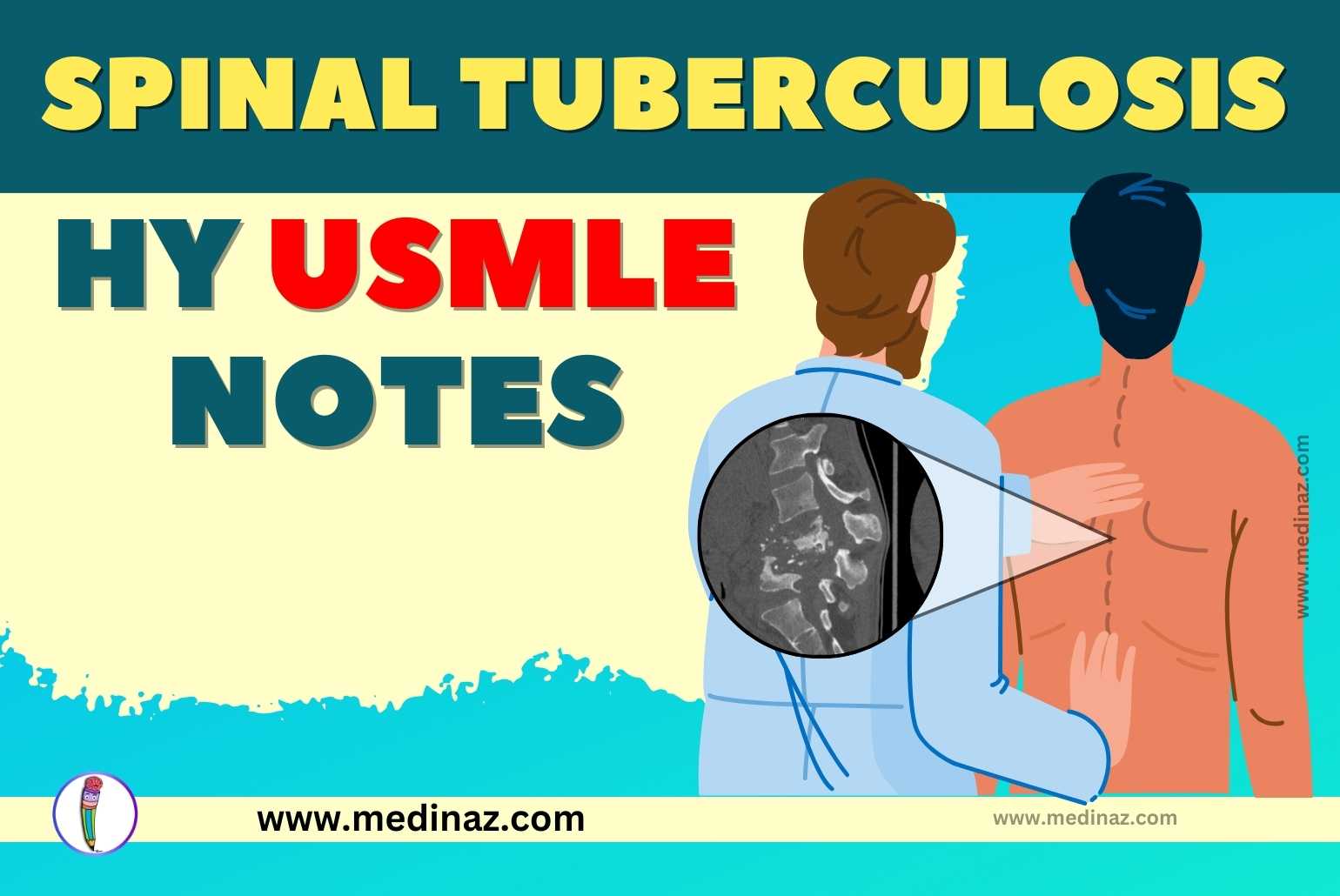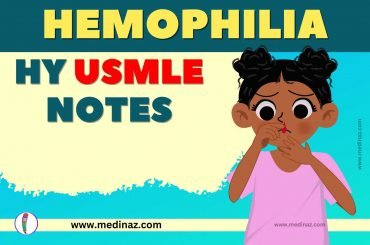Spinal Tuberculosis USMLE Notes & Mnemonics contains all the high-yield points you need to know.
- Spinal Tuberculosis (Pott’s Spine): A form of tuberculosis that affects the spine, leading to vertebral destruction, deformity, and potential neurological complications.
Epidemiology:
- Common in areas with high prevalence of tuberculosis.
- Can affect any age, but more common in young adults. (Ref)
Pathophysiology:
- Mycobacterium tuberculosis infection in the spine.
- Often secondary to primary TB infection elsewhere in the body.
- Predominantly affects the thoracic and lumbar vertebrae.
Clinical Features:
- Back Pain: Persistent and localized, often worsens at night.
- Spinal Deformity: Kyphosis or gibbus formation in advanced cases.
- Neurological Deficits: Due to spinal cord or nerve root compression (e.g., weakness, numbness, paralysis).
- Constitutional Symptoms: Weight loss, fever, night sweats (if active TB).

Diagnosis:
- MRI or CT: Imaging of choice, showing vertebral destruction, abscess, or soft tissue involvement.
- Biopsy and Culture: Confirmatory for Mycobacterium tuberculosis.
- Mantoux Test (Tuberculin Skin Test) and Interferon-Gamma Release Assays (IGRAs): To detect TB infection.
Treatment:
- Antitubercular Therapy (ATT): Standard multi-drug regimen for TB (e.g., isoniazid, rifampicin, pyrazinamide, ethambutol).
- Surgical Intervention: In cases of severe deformity, neurological deficits, or failure of conservative treatment.
- Spinal Bracing: To prevent deformity progression in some cases.
Complications:
- Spinal Instability
- Severe Kyphosis
- Neurological Impairment
- Paraplegia or Quadriplegia (in severe cases)
Mnemonic: “SPINE TB”
- Spinal involvement
- Pain in the back
- Infection (Mycobacterium tuberculosis)
- Night symptoms (pain, sweats)
- Epidemiology (more common in high TB prevalence areas)
- Tubercular origin
- Bone destruction and deformity
Chart: Spinal Tuberculosis Features and Management
| Feature | Description | Management Strategy |
|---|---|---|
| Affected Region | Mainly thoracic and lumbar vertebrae | ATT, possible surgical intervention |
| Symptoms | Chronic back pain, spinal deformity | Pain management, ATT |
| Diagnostic Tests | MRI/CT, biopsy, Mantoux test, IGRAs | Confirm TB infection, assess extent |
| Treatment Approach | Long-term ATT, surgery if necessary | Multi-drug regimen, monitor response |
Note: In the context of the USMLE, spinal TB often presents as a patient with persistent back pain and a history or risk factors for tuberculosis. Imaging findings, the necessity of a lengthy course of ATT, and the potential for severe complications like neurological impairment are key points to remember. Surgical intervention is reserved for specific indications.
Check other important USMLE Notes
A Visual Learning Platform





